S05: High Performance Computing with CUDA
Data-parallel Algorithms &
Data-parallel Algorithms &
Data Structures
Data Structures
John Owens
UC Davis
�
One Slide Summary of Today
One Slide Summary of Today
GPUs are great at running many closely-coupled
but independent threads in parallel
The programming model is SPMD—single program,
multiple data
GPU computing boils down to:
Define a computation domain that generates many parallel
threads
This is the data structure
Iterate in parallel over that computation domain, running a
program over all threads
This is the algorithm
S05: High Performance Computing with CUDA
2
�
Outline
Outline
Data Structures
GPU Memory Model
Taxonomy
Algorithmic Building Blocks
Sample Application
Map
Gather & Scatter
Reductions
Scan (parallel prefix)
Sort, search, …
S05: High Performance Computing with CUDA
3
�
GPU Memory Model
GPU Memory Model
More restricted memory access than CPU
Allocate/free memory only before computation
Transfers to and from CPU are explicit
GPU is controlled by CPU, can’t initiate transfers, access
disk, etc.
To generalize …
GPUs are better at accessing data structures
CPUs are better at building data structures
As CPU-GPU bandwidth improves, consider doing data
structure tasks on their “natural” processor
S05: High Performance Computing with CUDA
4
�
GPU Memory Model
GPU Memory Model
Limited memory access during computation (kernel)
Registers (per fragment/thread)
Read/write
Shared memory (shared among threads)
Does not exist in general
CUDA allows access to shared memory btwn threads
Global memory (historical)
Read-only during computation
Write-only at end of computation (precomputed address)
Global memory (new)
Allows general scatter/gather (read/write)
– No collision rules!
– Exposed in all modern GPUs
S05: High Performance Computing with CUDA
5
�
Properties of GPU Data Structures
Properties of GPU Data Structures
To be efficient, must
support
Parallel read
Parallel write
Parallel iteration
Generalized arrays fit these
requirements
Dense (complete) arrays
Sparse (incomplete) arrays
Adaptive arrays
Virtual Domain
Page Table
Physical Memory
S05: High Performance Computing with CUDA
6
�
Think In Parallel
Think In Parallel
The GPU is a data-parallel processor
Thousands of parallel threads
Thousands of data elements to process
All data processed by the same program
SPMD computation model
Contrast with task parallelism and ILP
Best results when you “Think Data Parallel”
Design your algorithm for data-parallelism
Understand parallel algorithmic complexity and efficiency
Use data-parallel algorithmic primitives as building blocks
S05: High Performance Computing with CUDA
7
�
Data-Parallel Algorithms
Data-Parallel Algorithms
Efficient algorithms require efficient building blocks
This talk: data-parallel building blocks
Map
Gather & Scatter
Reduce
Scan
S05: High Performance Computing with CUDA
8
�
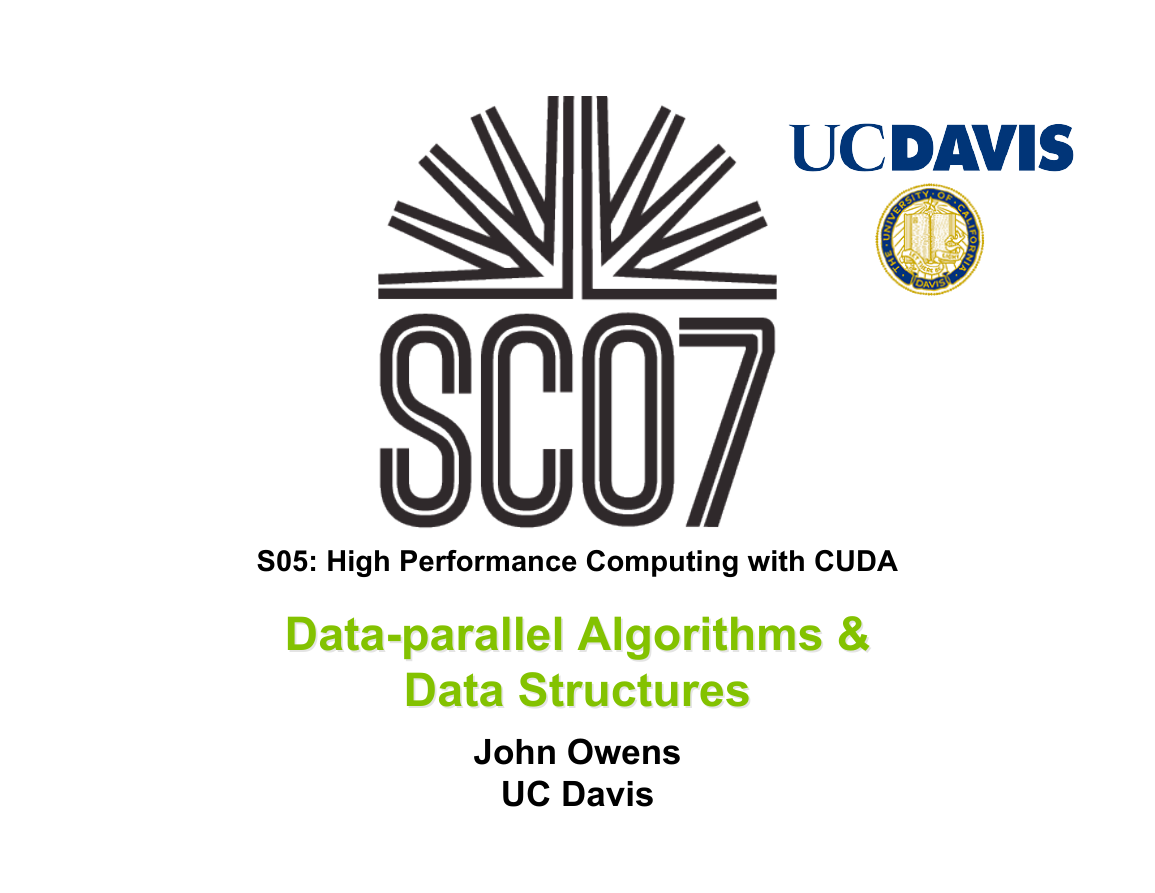
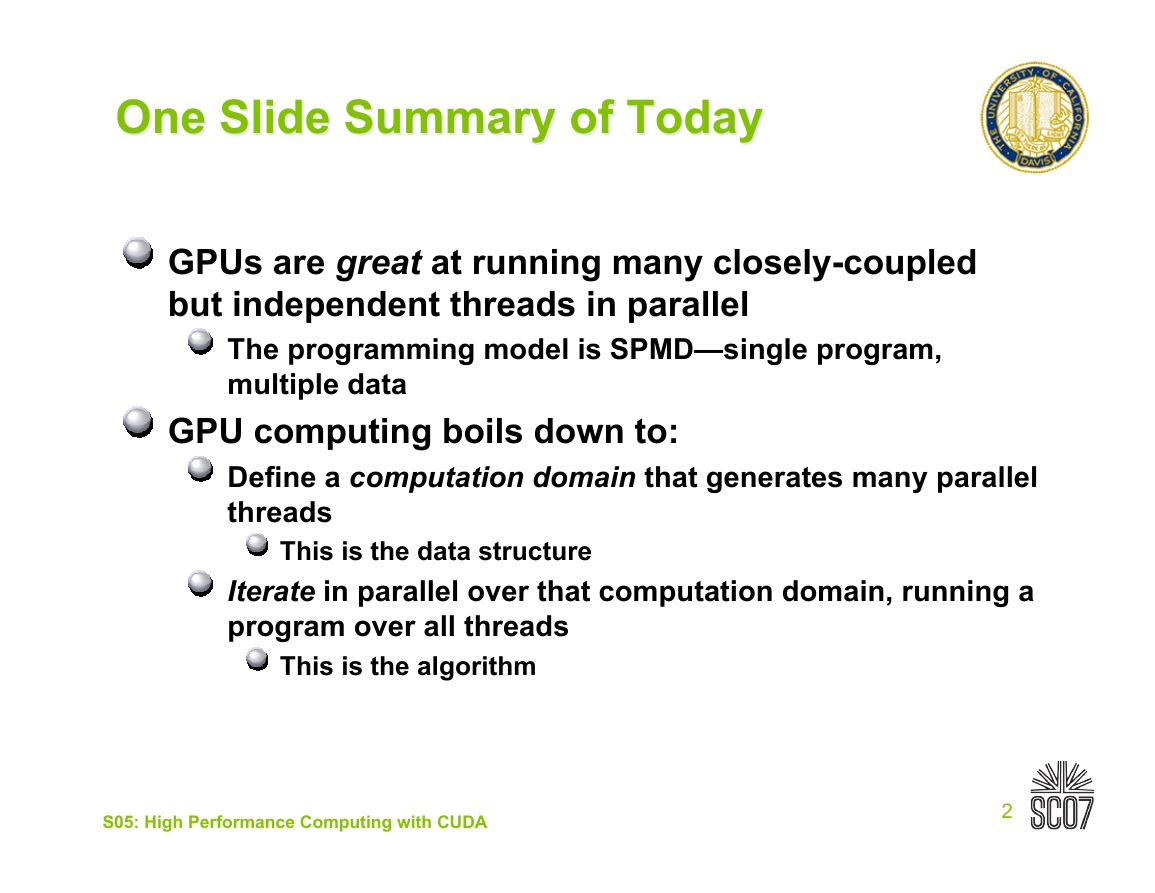
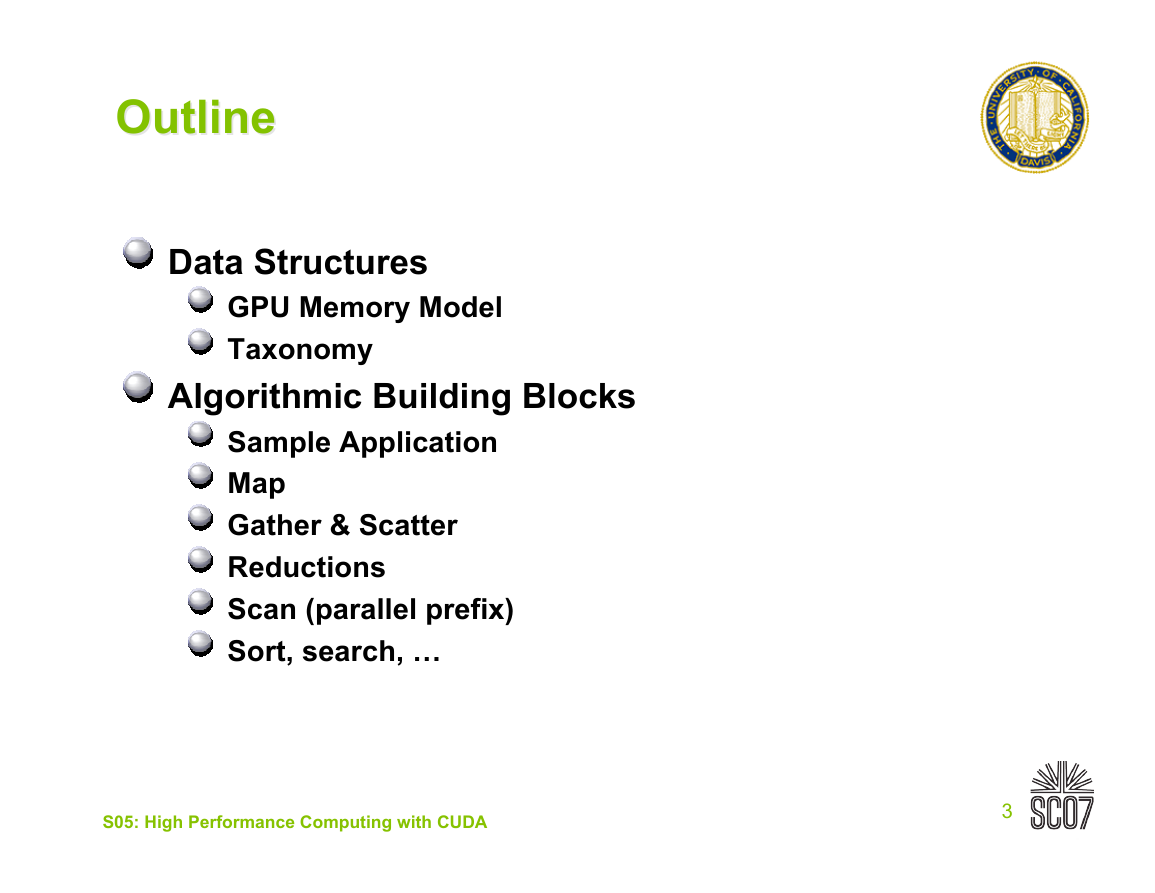
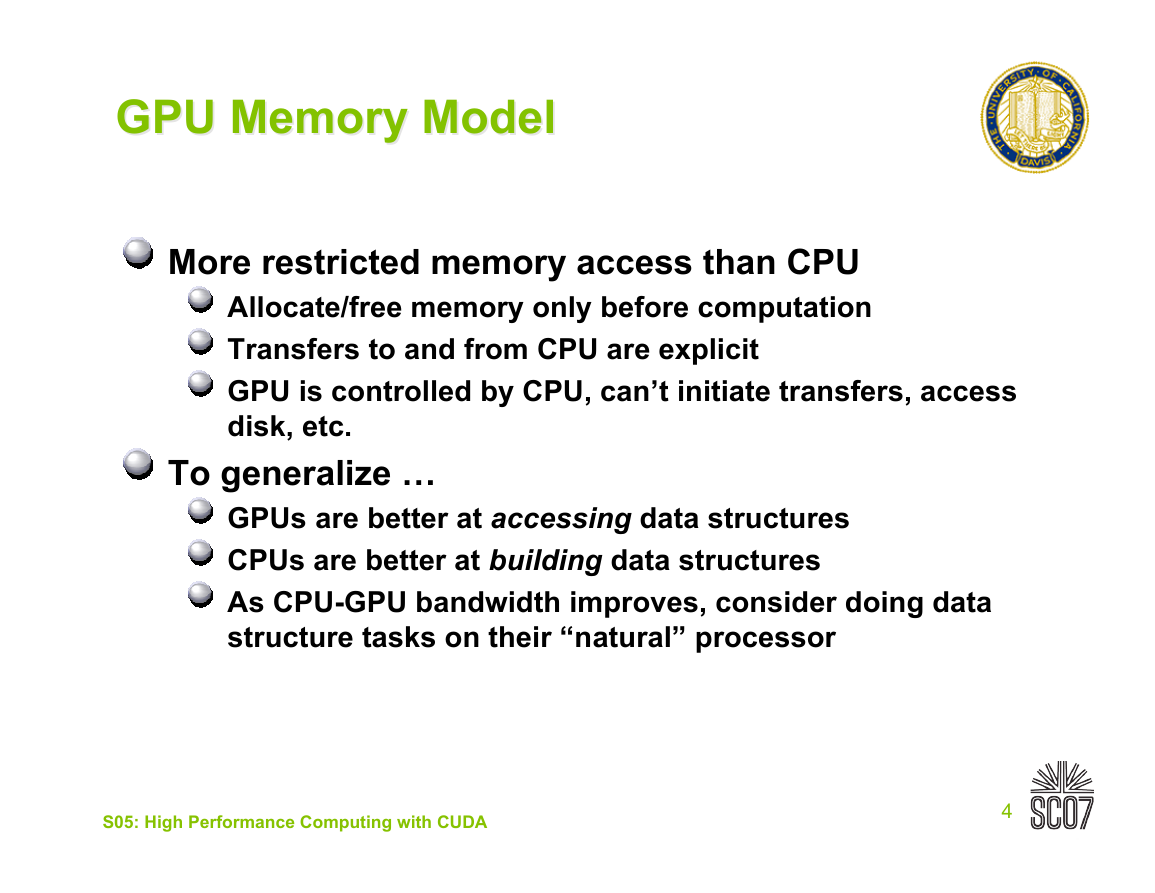
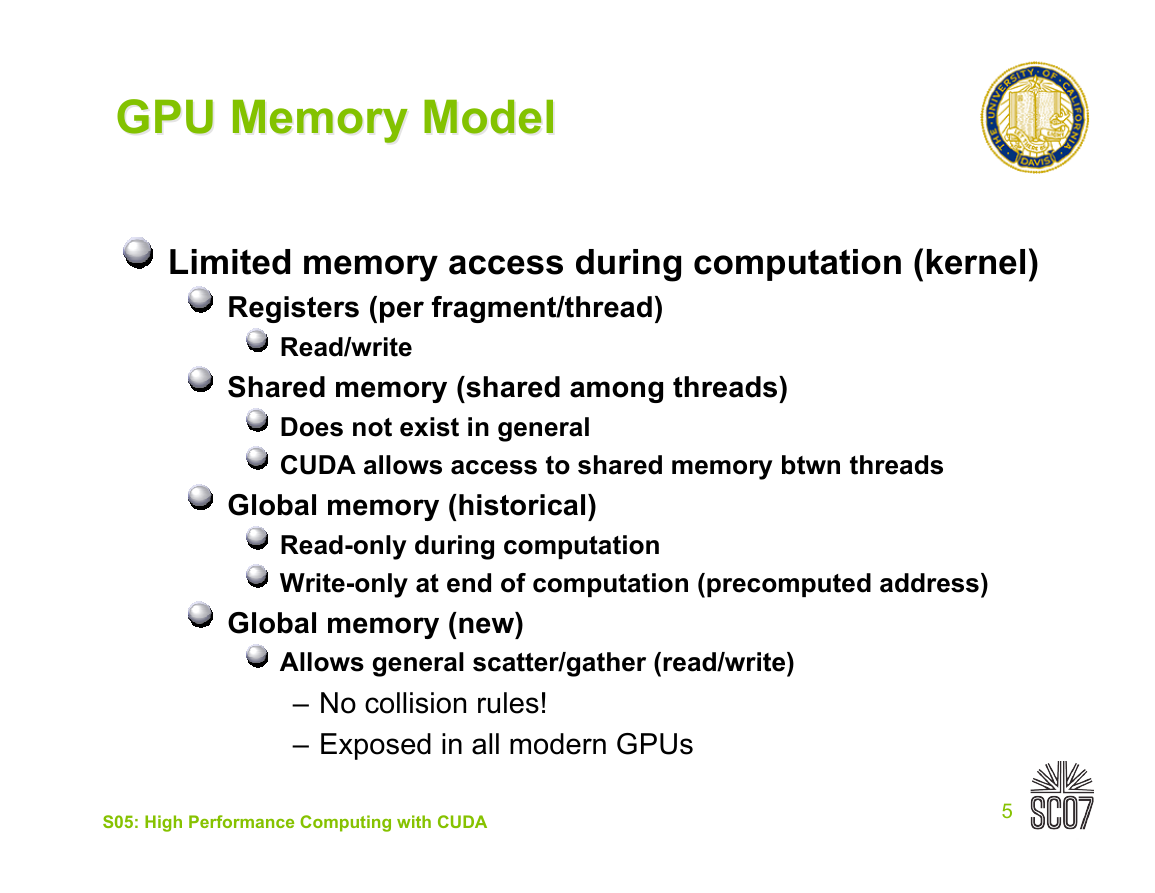
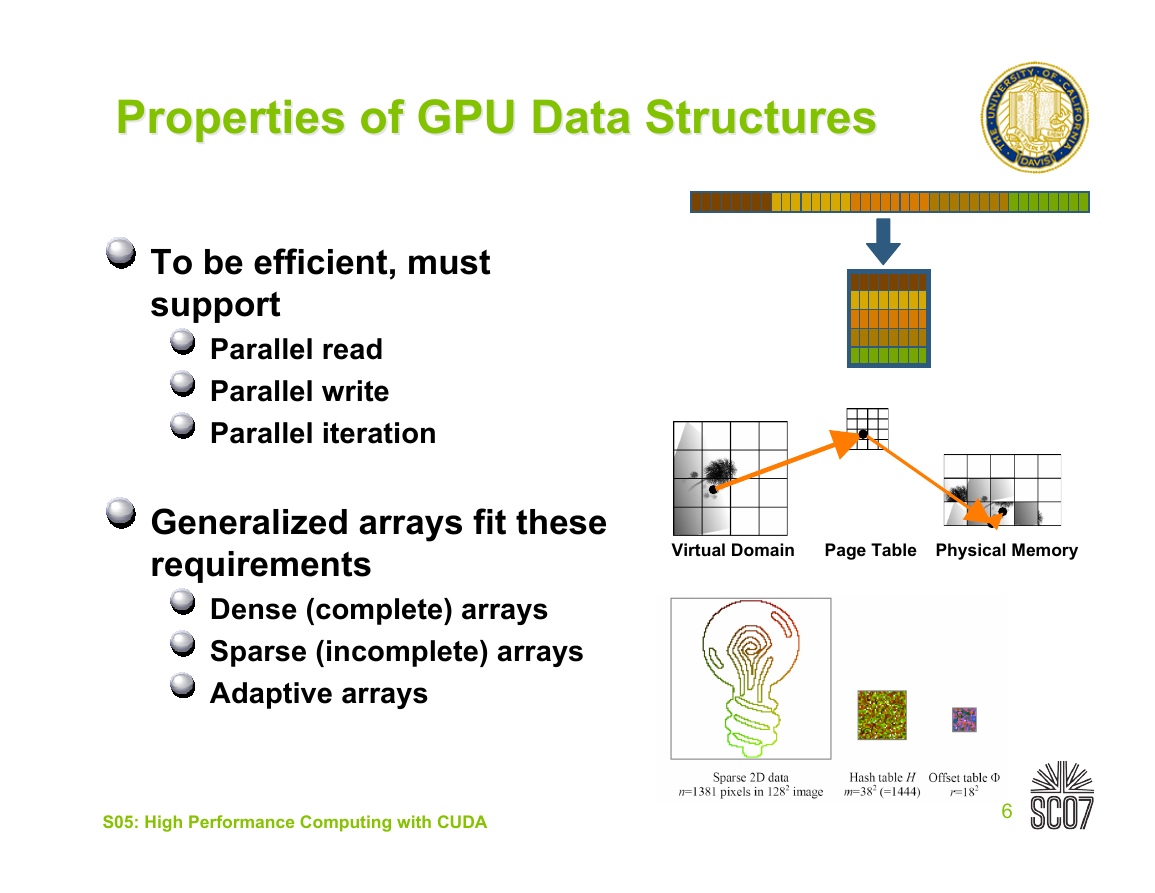
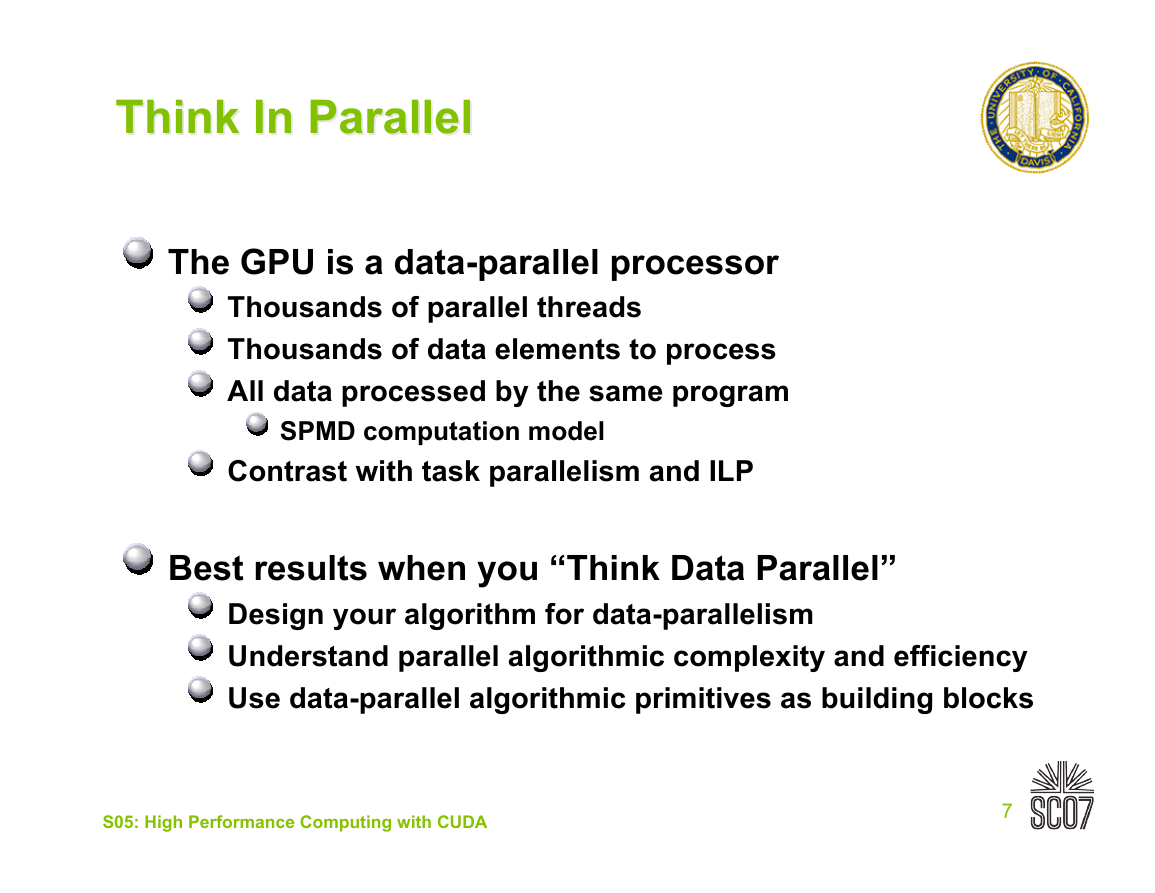
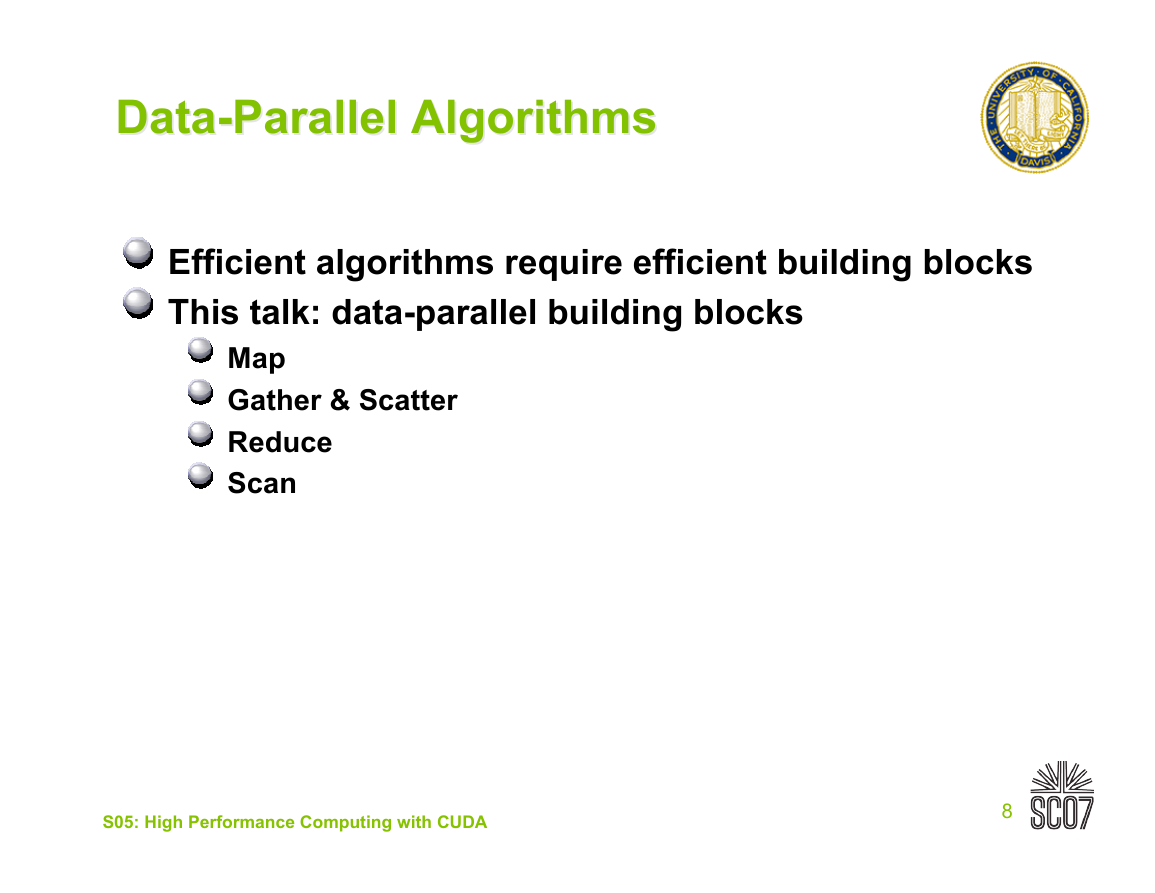








 2023年江西萍乡中考道德与法治真题及答案.doc
2023年江西萍乡中考道德与法治真题及答案.doc 2012年重庆南川中考生物真题及答案.doc
2012年重庆南川中考生物真题及答案.doc 2013年江西师范大学地理学综合及文艺理论基础考研真题.doc
2013年江西师范大学地理学综合及文艺理论基础考研真题.doc 2020年四川甘孜小升初语文真题及答案I卷.doc
2020年四川甘孜小升初语文真题及答案I卷.doc 2020年注册岩土工程师专业基础考试真题及答案.doc
2020年注册岩土工程师专业基础考试真题及答案.doc 2023-2024学年福建省厦门市九年级上学期数学月考试题及答案.doc
2023-2024学年福建省厦门市九年级上学期数学月考试题及答案.doc 2021-2022学年辽宁省沈阳市大东区九年级上学期语文期末试题及答案.doc
2021-2022学年辽宁省沈阳市大东区九年级上学期语文期末试题及答案.doc 2022-2023学年北京东城区初三第一学期物理期末试卷及答案.doc
2022-2023学年北京东城区初三第一学期物理期末试卷及答案.doc 2018上半年江西教师资格初中地理学科知识与教学能力真题及答案.doc
2018上半年江西教师资格初中地理学科知识与教学能力真题及答案.doc 2012年河北国家公务员申论考试真题及答案-省级.doc
2012年河北国家公务员申论考试真题及答案-省级.doc 2020-2021学年江苏省扬州市江都区邵樊片九年级上学期数学第一次质量检测试题及答案.doc
2020-2021学年江苏省扬州市江都区邵樊片九年级上学期数学第一次质量检测试题及答案.doc 2022下半年黑龙江教师资格证中学综合素质真题及答案.doc
2022下半年黑龙江教师资格证中学综合素质真题及答案.doc